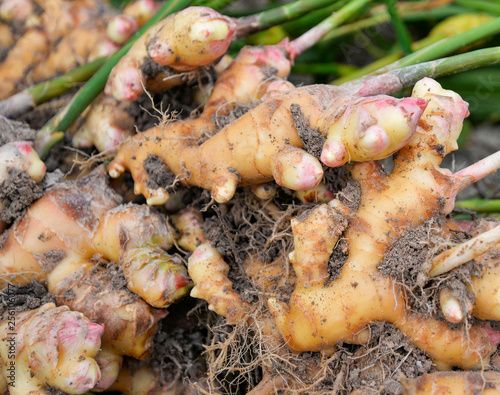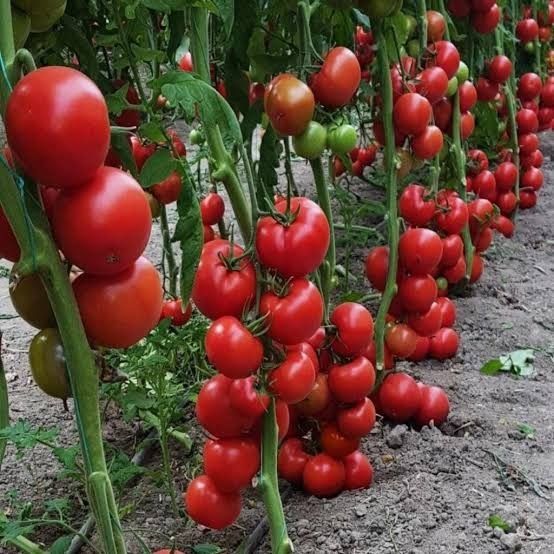Ginger Cultivation methods: A Comprehensive Guide
Ginger Cultivation methods, a rhizomatous herbaceous plant belonging to the Zingiberaceae family, has been cultivated for centuries for its culinary, medicinal, and commercial value. Its pungent and aromatic properties have made it an indispensable ingredient in various cuisines worldwide. As demand for ginger and its derivatives continues to rise, understanding effective cultivation methods becomes increasingly important. This article delves into the intricacies of ginger cultivation, exploring optimal practices, challenges, and opportunities for maximizing yield and quality.
Contents
- 1 Harvesting and Post-Harvest Handling
- 2 Challenges and Opportunities
- 3 Benefits of Organic Ginger Cultivation methods
- 4 Challenges of Organic Ginger Cultivation methods
- 5 Organic Ginger Cultivation methods Practices
Benefits of Ginger Cultivation
Cultivating ginger offers numerous advantages. Economically, it can be a profitable venture due to its high market demand and potential for value-added products. Ginger is also a versatile crop that can be integrated into sustainable farming systems, contributing to soil health and biodiversity. Moreover, the medicinal properties of ginger have spurred interest in its cultivation for pharmaceutical and nutraceutical purposes.
Goals of Ginger Cultivation
Successful ginger cultivation aims to achieve several key objectives:
- High yield: Maximizing ginger production per unit area is essential for economic viability.
- Superior quality: Producing ginger with optimal flavor, aroma, and medicinal properties is crucial for market competitiveness.
- Disease and pest resistance: Developing cultivation practices that minimize the impact of diseases and pests is vital for sustainable production.
- Environmental sustainability: Adopting eco-friendly methods that conserve resources and protect the environment is increasingly important.
Ginger Cultivation Methods
The success of ginger cultivation depends on a combination of factors, including climate, soil conditions, variety selection, and proper cultivation practices.
Site Selection and Soil Preparation
Ginger thrives in warm, humid climates with abundant rainfall. Well-drained, fertile loamy soil rich in organic matter is ideal. Proper site selection and soil preparation are crucial for optimal growth.
- Site selection: Choose a location with adequate sunlight and good drainage. Avoid areas prone to flooding or waterlogging.
- Soil preparation: Conduct soil analysis to determine nutrient deficiencies. Incorporate organic matter, such as compost or manure, to improve soil structure and fertility. Deep plowing or tilling is necessary to create a suitable planting bed.
Variety Selection
Numerous ginger varieties exist, each with distinct characteristics in terms of yield, flavor, pungency, and disease resistance. Selecting the appropriate variety for a specific region and market is essential.
- Local adaptation: Consider varieties that are well-suited to the local climate and soil conditions.
- Market demand: Select varieties that meet the preferences of the target market in terms of flavor profile and product form.
- Disease resistance: Prioritize varieties known for their resistance to common ginger diseases.
Propagation
Ginger is typically propagated through rhizomes. High-quality, disease-free rhizomes with multiple buds should be selected for planting.
- Rhizome selection: Choose healthy, plump rhizomes with well-developed buds.
- Cutting: Cut rhizomes into sections containing at least one bud.
- Planting: Plant the rhizome sections at the appropriate depth and spacing, depending on the cultivation method.
Cultivation Systems
Several cultivation systems can be adopted for ginger production, each with its own advantages and disadvantages.
- Traditional cultivation: This method involves planting ginger in raised beds or flat fields, with manual weeding and irrigation.
- Ridge cultivation: Creating ridges improves drainage and aeration, promoting root development.
- Mulching: Applying mulch helps conserve moisture, suppress weeds, and maintain soil temperature.
- Intercropping: Growing other crops between ginger plants can enhance soil fertility and provide additional income.
Crop Management
Effective crop management practices are essential for maximizing yield and quality.
- Fertilization Ginger Cultivation methods: Apply balanced fertilizers based on soil test results and crop requirements. Organic fertilizers can improve soil health and enhance ginger flavor.
- Irrigation Ginger Cultivation methods: Ginger requires adequate water, especially during the growth and development stages. Proper irrigation scheduling is crucial to prevent waterlogging.
- Weed control: Regular weeding is necessary to prevent competition for nutrients and water. Mulching and intercropping can help suppress weed growth.
- Pest and disease management: Implement integrated pest and disease management strategies, including cultural practices, biological control, and judicious use of pesticides.
Harvesting and Post-Harvest Handling
Harvesting ginger at the optimal maturity is crucial for maximizing yield and quality. Proper post-harvest handling is essential to maintain product quality.
- Harvest timing: Determine the appropriate harvest time based on variety, climate, and intended use.
- Harvesting methods Ginger Cultivation methods: Carefully dig up ginger rhizomes to avoid damage.
- Cleaning and grading Ginger Cultivation methods: Remove soil and debris, and sort ginger according to size and quality.
- Drying and curing Ginger Cultivation methods: Drying or curing ginger is necessary for long-term storage and value-added product development.
Challenges and Opportunities
Ginger cultivation faces several challenges, including diseases, pests, climate variability, and market fluctuations. However, opportunities exist for innovation and sustainable production.
- Disease and pest management: Develop resistant varieties, adopt integrated pest management practices, and explore biological control agents.
- Climate change adaptation: Implement water-saving irrigation techniques, explore drought-tolerant varieties, and consider climate-smart agriculture practices.
- Value-added products: Expand the market for ginger by developing value-added products, such as ginger powder, ginger oil, and ginger-based beverages.
- Organic and sustainable production: Meet the growing demand for organic ginger by adopting sustainable cultivation practices and obtaining organic certification.
Benefits of Organic Ginger Cultivation methods
- Premium market demand: Ginger Cultivation methods often commands higher prices due to its perceived health benefits and alignment with consumer values.
- Soil health improvement: Organic practices build soil fertility through composting, crop rotation, and cover cropping.
- Reduced environmental impact: By eliminating harmful chemicals, organic farming minimizes water pollution and protects beneficial insects.
- Enhanced flavor and aroma: Many consumers believe organic ginger possesses superior taste and aroma.
Challenges of Organic Ginger Cultivation methods
- Weed management: Organic farmers rely on manual labor, mulching, and cover crops to control weeds, which can be labor-intensive.
- Pest and disease control: Preventing and managing pests and diseases requires diligent monitoring and the use of organic alternatives, such as botanical insecticides and fungicides.
- Yield fluctuations: Organic yields may initially be lower than conventional methods, but they often stabilize over time as soil health improves.
- Market access: While demand for organic products is increasing, finding reliable markets and fair prices can be challenging.
Organic Ginger Cultivation methods Practices
- Soil preparation: Build organic matter through composting and cover cropping to improve soil structure and fertility.
- Variety selection: Choose ginger varieties known for their vigor, disease resistance, and adaptability to organic conditions.
- Propagation: Use organic, certified seed ginger to ensure the purity of the crop.
- Crop rotation: Rotate ginger with compatible crops to break disease cycles and maintain soil health.
- Weed management: Employ a combination of mulching, hand weeding, and cover crops to suppress weeds.
- Pest and disease control: Implement preventive measures, such as crop rotation, sanitation, and resistant varieties. Use organic pest and disease control methods when necessary.
- Harvesting and handling: Follow organic guidelines for harvesting and post-harvest handling to maintain product quality.




